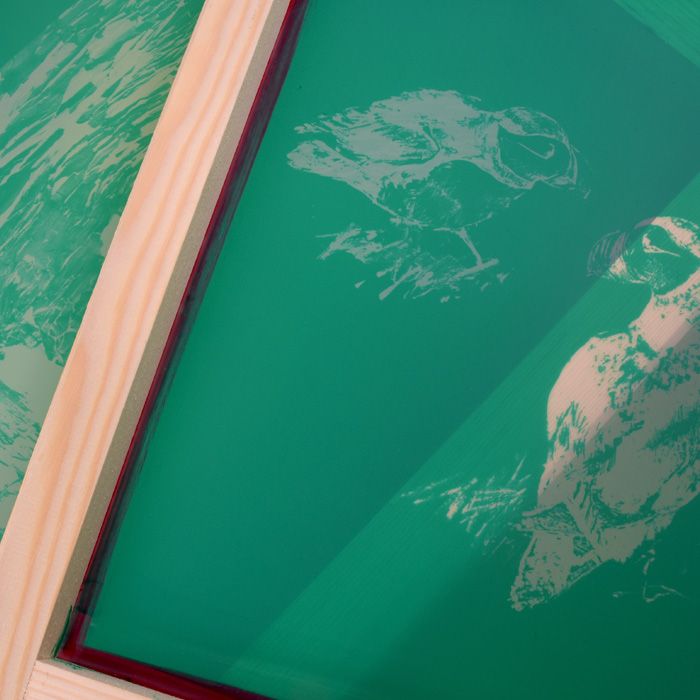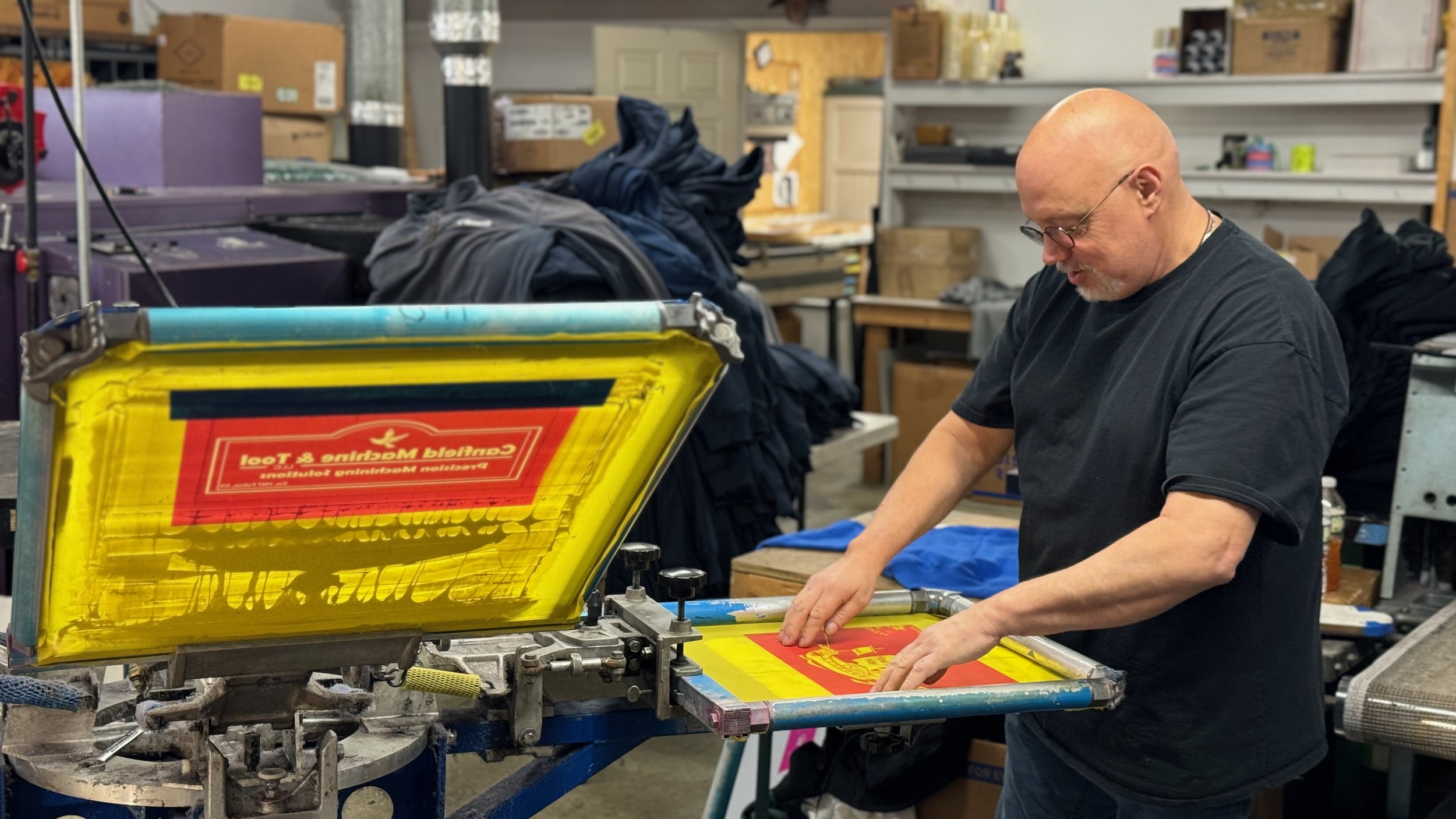Beginner-Friendly Screen Printing Kit for DIY Projects
Screen Printing Uncovered: Everything You Need to Learn About T-Shirt and Garment Printing Methods
Screen printing is a remarkable technique that incorporates art with strategy, offering limitless opportunities for imagination. All set to check out the necessary aspects that make screen printing an art form?
The Fundamentals of Display Printing: How It Works
When you dive right into screen printing, you'll uncover it's both a scientific research and an art. At its core, display printing includes developing a stencil, or display, that permits ink to go through just in particular areas (screen printing kit). You start by choosing your design and preparing your screen with a light-sensitive solution. When you expose this emulsion to light, it hardens, leaving your layout as a negative room.
Next, you'll mix your inks and prepare your printing surface area. Position the display over the textile, after that make use of a squeegee to press ink via the screen onto the garment. This procedure needs precision, as you desire clear, vibrant prints. After printing, you'll treat the ink with warm, ensuring it sticks to the fabric and lasts with washes. Each action is crucial, and understanding them will boost your display printing skills, transforming basic garments into unique, expressive pieces.
Sorts Of Display Printing Strategies
Once you grasp the fundamentals of display printing, it's time to discover the various strategies that can elevate your styles. One preferred approach is standard screen printing, where ink is pressed via a stenciled screen.
An additional choice is plastisol printing, understood for its longevity and brilliant shades, making it a preferred for lots of brand names. Experiment with halftone printing to develop slope impacts and intricate styles.
Important Tools for Screen Printing
To accomplish spectacular lead to display printing, having the best tools is basic. Initially, you'll require a sturdy screen printing structure, which holds the mesh that transfers your style onto the garment. Next, invest in premium mops; these are vital for using ink uniformly across the screen. You'll additionally call for an excellent exposure system to create your displays, along with a washout cubicle for cleansing them after usage. A reputable warm resource, like a conveyor dryer or heat press, is important for healing your prints to assure durability. Don't forget a proper office, furnished with tables and storage space for your products. Safety gear, such as gloves and masks, will keep you safe from chemicals and inks. With the right tools, you'll be well on your means to producing professional-quality prints.
Choosing the Right Inks and Materials
When picking inks and materials for screen printing, you require to think about the kind of ink that functions finest for your job. Think of material compatibility to ensure your designs look wonderful and last long. Also, explore green ink choices to make your printing procedure more sustainable.
Kinds Of Display Inks
Selecting the best screen ink is crucial for attaining lively, resilient prints that satisfy your project's requirements. There are numerous kinds of display inks to examine. Specialized inks, such as glow-in-the-dark or metallic, can add special impacts to your styles.

Textile Compatibility Considerations
Understanding fabric compatibility is important for attaining high-grade display prints, especially considering that different materials react distinctively to different inks. When choosing inks, think about the material type-- cotton, polyester, or blends. For cotton, water-based inks work well, providing soft qualities and breathability. Polyester, on the various other hand, commonly needs plastisol inks for far better adhesion and lively shades. If you're printing on blends, you may require to utilize a combination of both kinds. Always examine your inks on sample textile to guarantee they adhere correctly and preserve shade stability. In addition, keep in mind that textile weight and structure can influence the final end result, so picking the appropriate ink and product combination is crucial for your task's success.
Eco-Friendly Ink Options
Environment-friendly inks are coming to be a prominent option for display printers that wish to lessen their environmental impact while maintaining high quality. When choosing inks, consider water-based inks, which are less damaging and simpler to clean up compared to standard solvents. These inks bond well with materials, providing vivid results without harmful chemicals. You might also check out eco-solvent inks that use less volatile natural compounds (VOCs), making them a more secure option for both your health and the planet.
In addition, seek inks made from eco-friendly sources, such as soy or vegetable-based alternatives. By choosing the appropriate inks and materials, you'll not just create stunning styles but additionally add to an extra lasting printing process. Make the switch, and your prints will show your dedication to the atmosphere!
Preparing Your Design for Display Printing

Submit Format Requirements
To assure your design looks sharp and dynamic on textile, you'll require to pay close interest to file style demands for screen printing. Beginning with vector data like AI or EPS, as they can be scaled without shedding quality. If you make use of raster images, opt for high-resolution data, such as TIFF or PNG, ideally at 300 DPI. Stay clear of using JPEGs, as they can shed clarity when resized. Make certain your design has a clear background to avoid undesirable white sides on your prints. Finally, maintain color modes in mind; CMYK is conventional for display printing, so convert your RGB designs as necessary. By complying with these guidelines, you'll set your artwork up for an effective print.
Color Splitting Up Methods
Color splitting up is an essential step in preparing your design for display printing, and grasping it can significantly improve your print quality. You'll require to damage your layout into specific colors, as each color needs a different display during printing. This precision not just assures accurate color depiction however additionally simplifies the printing procedure.
Resolution and Dimension
Attaining the very best cause screen printing begins with guaranteeing your style has the best resolution and dimension. Preferably, your art work ought to go to least 300 DPI (dots per inch) for sharp, clear prints. If you use lower resolution, your end product might look unprofessional and pixelated.
When it concerns size, consider the measurements of your print area. Design your art work to match the final print dimension, ideally developing it in the actual dimensions you'll anonymous be printing. This method, you'll stay clear of any kind of unanticipated scaling concerns.
Constantly examine your style in both vector and raster layouts. Vector graphics can be scaled without shedding high quality, making them excellent for display printing. Preparing properly will guarantee your style looks amazing on every garment!
Step-by-Step Display Printing Refine
Screen printing is a dynamic process that allows you to develop dynamic designs on various surface areas. To websites obtain begun, you'll need a screen, solution, and your picked ink.
After rinsing the unexposed solution, your display prepares. Establish it up on your printing surface area and align your garment underneath it. Pour ink onto the display and utilize a squeegee to press the ink through the pattern onto the textile. Lift the screen thoroughly and let the print dry. Heal the ink utilizing heat to assure durability. That's it! You have actually effectively screen published your layout.
Tips for Effective Screen Printing Projects
While you're diving right into your screen printing tasks, bear in mind that prep work is crucial to success. Start by collecting all your materials-- inks, screens, squeegees, and garments. A clean workspace aids avoid undesirable errors, so clean before you start.
Next, confirm your art work is high-resolution and correctly sized for your garment. Test your display for proper exposure and tidy it extensively to prevent spots. When mixing your inks, adhere to the manufacturer's guidelines to achieve the right consistency.
Throughout printing, apply even stress with your squeegee for consistent outcomes. Do not rush; take your time to confirm each print meets your requirements. After printing, allow your garments dry totally prior to handling or packaging them.
Finally, constantly keep a sample of your help future reference. By doing this, you can assess your development and boost your strategies gradually. Happy printing!

Frequently Asked Concerns
The length of time Does It Take to Set up a Display Printing Work?
Establishing a display printing task normally takes around 30 minutes to an hour. You'll prepare the screens, mix inks, and adjust journalism. The moment varies based on complexity and experience, so remain arranged!
Can I Print on Different Fabric Types Using the Exact Same Method?
Yes, you can publish on different fabric types using the exact same strategy, yet you'll need to readjust your inks and settings. Some textiles take in ink in a different way, so exploring warranties the most effective outcomes for each product.
What Are Usual Blunders to Avoid in Screen Printing?
When display printing, prevent typical errors like using the incorrect ink, disregarding correct exposure times, or avoiding pre-press checks. Always test your arrangement and maintain tidy screens to guarantee top quality results each time.
How Can I Effectively Clean and Preserve My Screen Printing Tools?
To appropriately clean and preserve your screen printing devices, you should frequently wash displays with ideal solvents, inspect mops for wear, and guarantee all devices are stored dust-free and dry. Uniformity enhances and protects against expensive fixings performance.
Is Display Printing Eco-friendly Compared to Various Other Approaches?
Screen printing can be a lot more environmentally pleasant than various other methods, particularly if you make use of water-based inks and eco-conscious materials. By picking sustainable materials and techniques, you reduce waste and reduce your influence on the earth.
Screen Printing Uncovered: Whatever You Required to Know Regarding Tee Shirt and i was reading this Garment Printing Strategies
At its core, display printing involves creating a pattern, or screen, that allows ink to pass with just in details areas. Placement the screen over the fabric, then use a squeegee to press ink with the screen onto the garment. One prominent approach is traditional screen printing, where ink is pushed through a stenciled screen.When selecting inks and materials for screen printing, you need to take right into account the kind of ink that functions finest for your task.